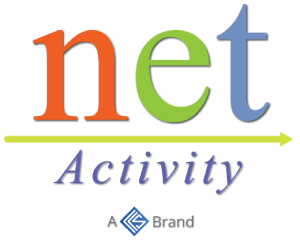9 Tech Trends that will grow your Business in 2020
How will the latest advancements in tech affect your small business in 2020?
From building trust to enhancing customer experience, tech tools and innovative processes will allow your organization to stay productive and competitive. As Spiceworks 2020 State of IT survey reports, “88% of businesses expect IT budgets to grow or stay steady over the next 12 months.”
So, how do small businesses with fewer than 100 employees plan to allocate their technology budgets? Take a look:
- 35% to hardware
- 31% to software
- 22% to hosted and cloud-based services
- 11% to managed services
As organizations increase spending on tech tools, it’s critical to understand how small business technology trends impact your company while finding ways to implement agile solutions.
A Complete Mobile Experience is Required
Let’s face it; if your website isn’t mobile-friendly and accessible, then it’s tough to stay competitive. While mobile online use won’t slow in 2020, you can expect to see more consumers accessing information and payment options in brick and mortar stores.
- Mobile Payments In-Store. Instead of searching for a credit card, customers want to use their phone to make in-store payments by holding their phone up to a terminal or scanner.
- Mobile Payments Online. One-click online checkouts using mobile wallets gain popularity due to a better conversion rate. Solutions include Apple Pay, PayPal, One-Touch, and Visa Checkout.
- Mobile Marketing. Companies increasingly leverage in-store mobile marketing to meet consumer demands since “32% of shoppers changed their minds about purchasing items after checking out the product information on their mobiles within brick-and-mortar stores,” according to Invesp.
Small Businesses Turn to Artificial Intelligence as a Service
In 2020, more SMBs will invest in artificial intelligence as a service (AIaaS) with Tractica finding “the total global revenue for AI software is expected to grow from $9.5 billion in 2019 to as much as $118.6 billion in 2025.” A rise in third-party services allows companies to outsource tasks via a monthly subscription leading to an increase in productivity.
Data Analytics Fuels SMB Strategies
Access to data is vital for business growth. However, the sheer amount of information is challenging to sift through and analyze. Fortunately, Deloitte reports, “Cloud-based cognitive services are increasing adoption by reducing the investment and expertise required to get started.” Instead of using data to inform marketing and sales plans, more small businesses will use technology to inform their strategy at the granular level.
Collaboration Tools Improve Workplace Communications
As more small business leaders rely on a remote workforce to scale their business, collaboration software becomes vital. These tools connect in-house staff with contractors across the globe, resulting in increased productivity.
With Gensler’s U.S.Workplace Survey reporting that 43% of respondents consider the “best workplace” as one that promotes team building and collaboration, silo’ed offices and communication gaps are not an option in 2020. Instead, small business owners will develop strategies based on how their staff interacts, what their pain points are, and will find ways to deliver data that is relevant to all sides.
SMB Websites Focus on Voice and Chatbot Enhancements
From vehicles adding voice technology on infotainment systems to algorithm changes favoring a customer-centric approach over keywords, more small business owners will pivot to technologies that gear their website to user’s specific needs.
- A conversational tone with natural interwoven keywords beats fluffy keyword-stuffed content.
- The importance of user experience leads to user-friendly content and AI chatbots that solve everyday problems.
User Reviews Provides Data for Personalization
Customer reviews remain vital in 2020. Data from current clients provide social proof along with information on competitors, and keywords used in natural language. Affordable technologies help small business leaders glean more data from reviews which helps with:
- Formulating new products.
- Bulking up customer support.
- Producing better content.
With so many ways to use reviews, including the boost to SEO and web traffic, more small businesses will encourage reviews across multiple platforms then use the information to develop data-driven strategies.
VoIP Business Telephone
With VoIP, you can bring your telephone setup to the cloud, uniting your entire business with a single, advanced, cloud-based, hosted telephone system featuring business-class service. Using VoIP (Voice over Internet Protocol), you can stay connected to your office and customers, no matter where you work.
These are the top ten benefits of VoIP for small business that you should know:
- Security
- Accessibility
- Lower Costs
- Call Recording
- Voicemail Transcription
- Easy Setup
- Call Quality
- Reliability
- Reporting
- Virtual Concierge
Social Media Remains Challenging But Necessary
From a drop in organic reach to consumer privacy concerns, social media management is difficult. Plus, it consumes a small business owner’s time and marketing budget. To balance the needs of customers without massively increasing costs, SMBs will focus on data-driven decisions. Key areas to keep an eye on in 2020 include:
- Social proof remains paramount to consumers. Organizations that provide value while increasing trust outperform the competition. Ways to do this include sharing customer interactions, leveraging employee advocacy, and building online communities.
- Alternate channels intrigue users. From Pinterest to TikTok, you can expect to see other options besides Facebook and Instagram attract attention. Consider where your target audience plays and shops, as their tech use changes.
- Customer service on social platforms grows.45% of consumers head to social media when they have a question. SMBs who support clients across social channels develop trust while enhancing brand visibility.
Managed Services
Managed IT services offer a lot of things that simply aren’t possible with a smaller IT department: 24/7 monitoring, enhanced data security and resilience, and the scalability to keep up with your growth. With data breaches and identity theft at an all-time high, and hackers increasingly going after SMBs, expert help to safeguard and protect your business is critical. Growth in managed services continues, so make sure you are working with the right provider for your business.
Download our Managed Services Checklist to learn more.

















